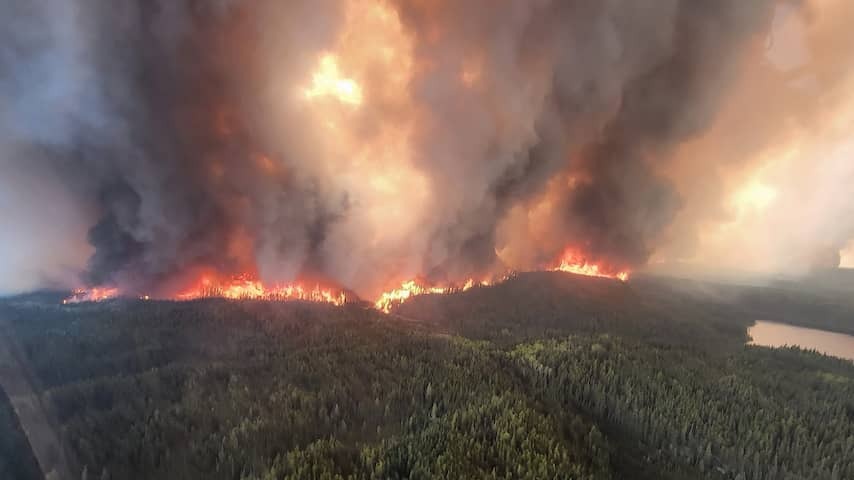
In Nederland hing dinsdag een soort waas in de lucht. Hierdoor lukte het de zon maar niet om echt door te breken. Dat komt vaker voor, maar lang niet altijd door bosbranden. Laat staan door brandhaarden op zo’n 7.000 kilometer afstand, in Canada.
De bosbranden in Canada begonnen eind april en nemen nog altijd toe in omvang. De rookontwikkeling is volgens NASA zo hevig dat die zichtbaar is vanuit de ruimte, op ruim 1 miljoen kilometer afstand van de aarde.
Veel van die rookpluimen staken vorige maand de Atlantische Oceaan over, schrijft Copernicus. De Europese klimaatdienst houdt een oogje op de luchtkwaliteit. Bij bosbranden komen kleine schadelijke deeltjes vrij.
De recentste rookpluim bereikte eerder deze week het Europese vasteland. Het zorgde voor onder meer heiig weer, vergelijkbaar met een soort sluierbewolking, in Spanje en Frankrijk. En dinsdag kreeg ook Nederland te maken met de gevolgen van de bosbranden in Canada, in de vorm van een waas aan de hemel en een niet zo krachtige zon, legt Weerplaza uit.
Gevolgen voor de luchtkwaliteit waren er niet, zegt de weerdienst: de deeltjes van het vuur bevonden zich hoog in de atmosfeer. Sinds woensdag is alles weer bij het oude.
Maar dat is niet het geval in Canada zelf. Bijna alle Canadese provincies gaan nu gebukt onder zware bosbranden. Het Canadian Forest Fire Centre telt momenteel ruim tweehonderd branden, waarvan de helft (nog) niet onder controle is.
In the Netherlands, there was a kind of haze in the air on Tuesday. As a result, the sun just couldn’t really break through. That happens more often, but not always due to forest fires. Let alone by fires some 7,000 kilometers away, in Canada.
The forest fires in Canada started at the end of April and are still increasing in size. According to NASA, the smoke development is so intense that it is visible from space, more than 1 million kilometers from Earth.
Many of those plumes of smoke crossed the Atlantic Ocean last month, Copernicus writes. The European climate service is keeping an eye on air quality. Small harmful particles are released during forest fires.
The most recent plume of smoke reached the European mainland earlier this week. It caused, among other things, hazy weather, comparable to a kind of veil of clouds, in Spain and France. And on Tuesday, the Netherlands also had to deal with the consequences of the forest fires in Canada, in the form of a haze in the sky and a not so powerful sun, Weerplaza explains.
There were no consequences for air quality, says the weather service: the particles from the fire were high in the atmosphere. Everything has been back to normal since Wednesday.
But that is not the case in Canada itself. Almost all Canadian provinces are now suffering from severe forest fires. The Canadian Forest Fire Center currently counts more than two hundred fires, half of which are not (yet) under control.